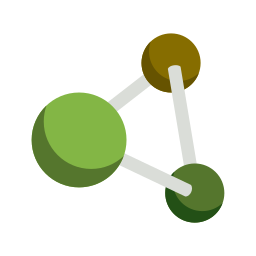About Us

An Environmentally Friendly Solution
SoilChem’s products are organic, biodegradable, non-corrosive, non-toxic and 100% environmentally friendly. Our high concentrated formulations allow for economical shipping to further enhance your cost-effective results.
Sand turns into sandstone, clay turns into slate and other various soil combinations turn into rock. This process is called lithification.

Meeting the Highest Standards
Laboratory testing with SoilChem’s road material has demonstrated unprecedented results and will undergo third-party CBR testing and certification.
This measures the strength and load-bearing capacity of a road after it has been submerged underwater for 96 hours, which simulates a road submerged in a flood for four days. The ASHTO and ASTM testing standards determine this to be the most severe conditions a road should have to endure.
Because the material provides a water-resistant barrier under proper compaction and application, it is not affected by freeze and thaw cycles that can damage the roads, causing potholes and blistering uplifts or separation.
SoilChem’s product provides great dust control and eliminates wash boarding and continuous maintenance. It’s used to provide dust control on roads and unpaved surfaces, while also proving to be more environmentally friendly than competing solutions.
Additionally, it does not contain any chlorides or toxic by-products and is not corrosive to vehicles, toxic to roadside vegetation or harmful to use around nearby bodies of water or environmentally sensitive areas.

Soil Stabilization
The challenge for all soil stabilizers is that there are over 200 types of clay and countless combinations of soil types involving variations in sand, silt, clay and rock. This causes hit-and-miss results at best.
The top three elements found in the Earth’s crust consists of oxygen, silicon and aluminum. They always combine to form aluminosilicates, which are minerals composed of aluminum, silicon, oxygen and counter cations.
This material dissolves silicon and aluminum ions and the neighboring silicon and aluminum hydroxide molecules, which then undergo a condensation reaction. This reaction causes the monomers and other silicon and aluminum hydroxide molecules to poly-condense or polymerize, to form rigid chains or nets of oxygen-bonded tetrahedral.
The physical properties of the soil can often approach and sometimes even exceed the structural strength of concrete.
Application Guidelines
-
Roads to be treated should first be sampled from several areas throughout the entire distance to a depth of 8″. These samples should be co-mingled and sent to the Soil Chem lab for evaluation. We will determine the soil’s plasticity index (Atterberg limits) and optimum moisture content (Proctor) tests. These values will aid in the application of the product to optimize its effectiveness.
-
The job should be performed under weather conditions that will allow a minimum of three dry days before it rains. If it rains right after a job is complete, it could potentially compromise the entire job.
-
When weather conditions allow, the road should be ripped to a depth of 8″ and disked until the soil is evenly divided and all clumps are busted up. At this point, a moisture reading should be taken and the first water trucks with blended product prepared.
-
The product should now be applied via water truck at a predetermined rate confirmed by the soil sample testing results. The amount of water used will depend on the initial moisture reading.
-
Once applied, the surface should immediately be disked or tilled to depth completely with a second moisture reading taken. If the soil has dried and is not in the optimum range, then the water truck should spray straight water followed by the disk to bring the soil to optimum content.
-
At this point, the road can now be crowned and compacted. It is highly advised to use a sheep’s foot roller followed by a pneumatic smooth tire packer. Extra care should be taken during this process as maximum compaction and proper crowning play vital roles in the strength of the road.
-
The road can now be opened to light local traffic. It is advised that the road remain off-limits to heavy traffic for a minimum of 48 hours before being fully opened.
-
If the road is to be chip sealed the first coats of prime may be applied after the 48-hour period.
-
For roads that will not be chip sealed or asphalted, it is recommended to apply a top coat of dust control to suppress nuisance dust and prevent fine wash boarding. During dry seasons the dust control should last up to three months.
-
With proper application, the treated road should provide years of service with a fraction of the maintenance cost associated with conventional engineered roads.

Visit Us
2160 N. Main St. Suite C-35
Newcastle, OK
73065
Contact us
Open Hours
M-F: 9am - 4pm